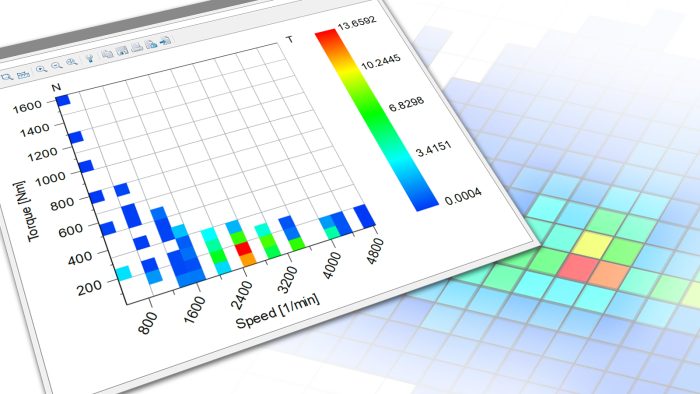Sep 2, 2021
Load spectra can be derived from time series - a measured time-torque-speed curve or one derived from simulations. For time series with only positive torque, the "Simple Count" method is used to obtain a load spectrum with torque-speed bins. The refinement of the resolution in load spectrum bins (grid) can be specified.
The procedure is more complicated for time series with positive and negative torques since the tooth root is then subjected to alternating loads. First, the "Rainflow" method is used to find all significant torque changes over time. A load spectrum, which also contains alternating bending factors YM, is then derived from the resulting Rainflow triangular matrix. In addition to extended reports on the calculation details, graphical displays are now available in matrix form for torque and speed distribution with frequency. The same display can also be used for the direct input of load spectra. The evaluation and control of the collective are thus much clearer.
Have we sparked your interest? Dr. Ulrich Kissling will give an (online) presentation (in English) on "Use of duty cycles or measured torque-time data with AGMA ratings" at this year's AGMA Fall Technical Meeting (Nov 1-3, 2021) in the USA. For more information, please click here. If you have any questions, please do not hesitate to contact us.

